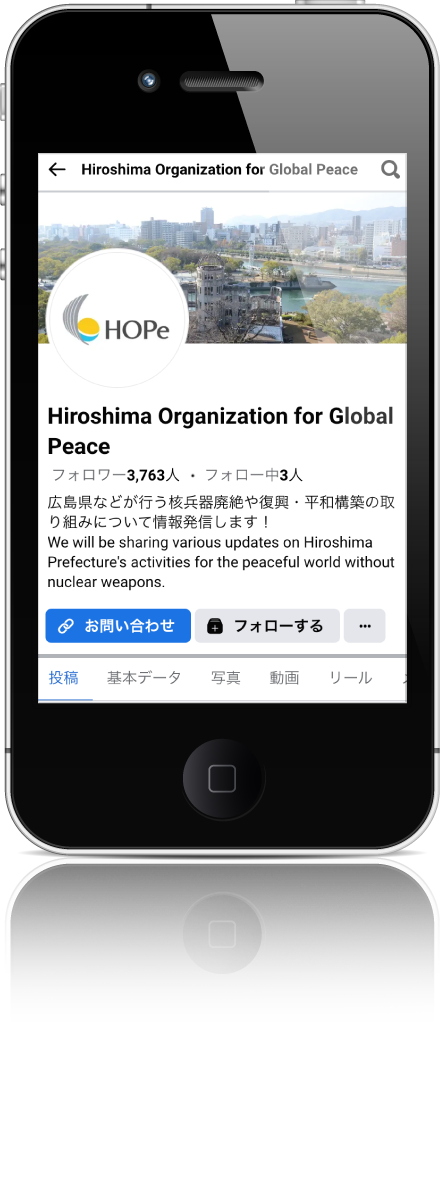Research Results and
Recommendations for Download
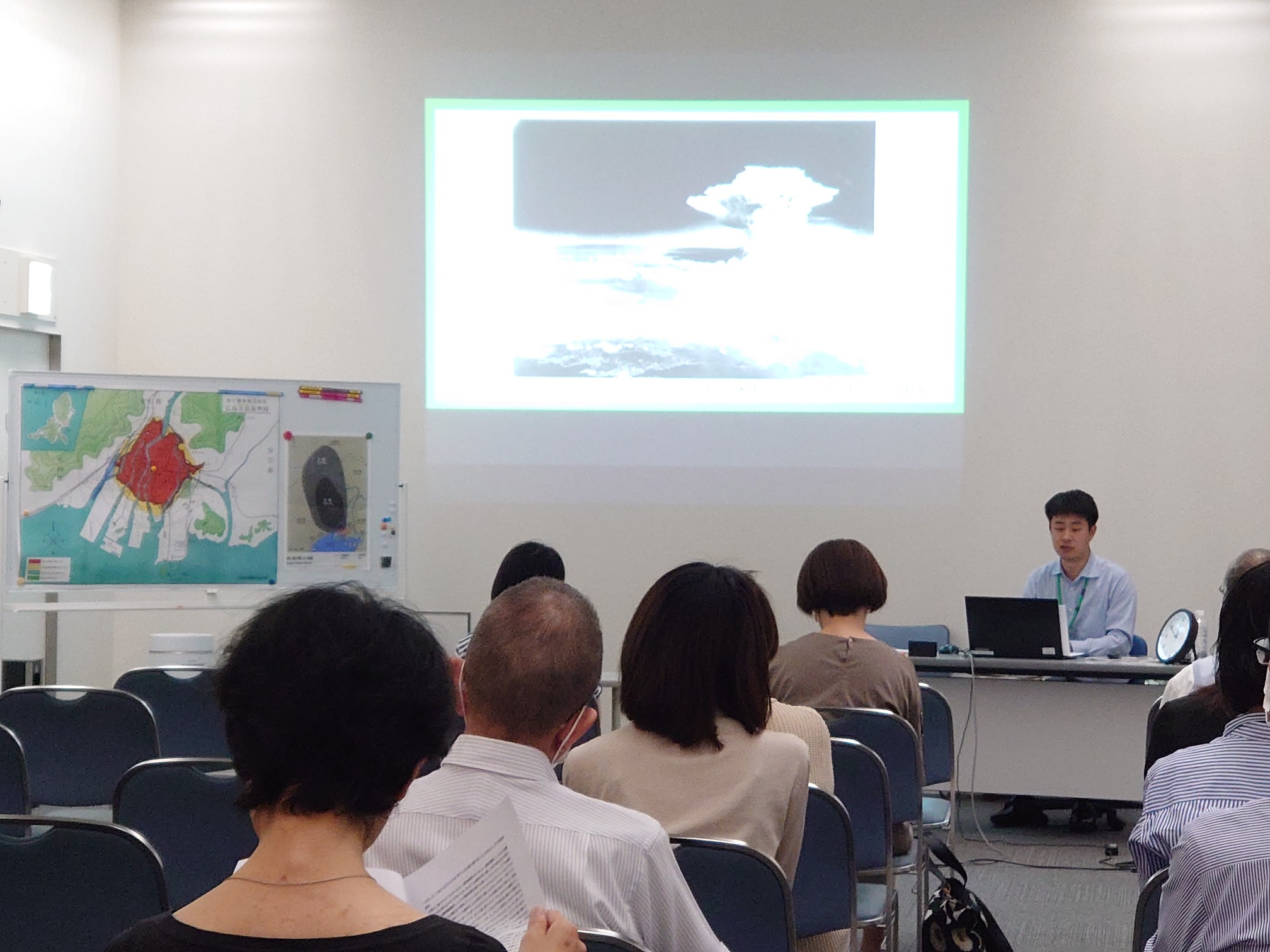
In 2012, the city of Hiroshima began a training program for successors of the legacy of survivors of the atomic bomb in order to impart to future generations the experiences of survivors, their desire for peace, and the reality of atomic bombing. In addition to the training of atomic bomb witnesses, who impart their personal experiences of surviving the bomb, and A-bomb legacy successors, who transmit the experiences of the witnesses and their desire for peace, the city launched a program in 2022 to train Hibakusha family member legacy successors, who carry on and transmit the experiences of their family members.
Mr. Ogata Kento is one of the seven people who were first appointed to the family member legacy successor program in April of 2023, having applied shortly after recruitment began. Born in 1990, appointed at the age of thirty-two, and now thirty-four, he was the youngest of the family member successors. Mr. Ogata was in the fourth grade of elementary school when his maternal grandfather, Mr. Matsubara Shozo, first told him about his experience of surviving the atomic bomb. Shozo was affected by the bomb at the age of sixteen, when he entered Hiroshima the day after the bombing and spent a week searching for his aunt on foot.
“It all began with a homework assignment for peace studies, which was to ask someone close to me about their experiences of war. I was still too young to understand, and all I really remember was that he had a painful experience. Seeing my grandfather’s grim expression as he spoke, I thought that perhaps I shouldn’t have asked at all, and I didn’t really hear much after that.”
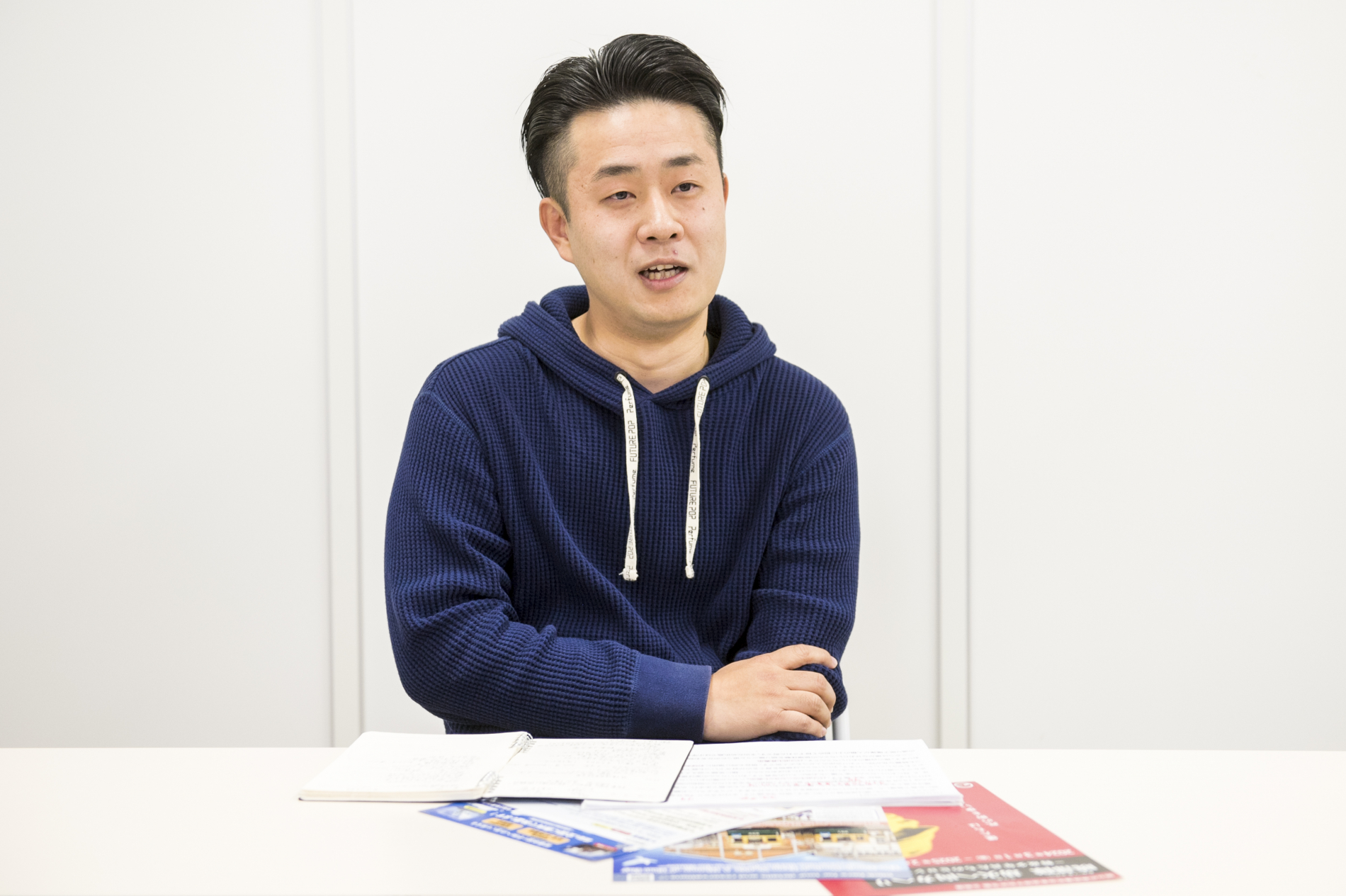 Mr. Ogata spoke about what compelled him to become a family successor
Mr. Ogata spoke about what compelled him to become a family successor
When Mr. Ogata lived in Tokyo to continue his education, he was surprised at the difference between Tokyo and Hiroshima in the attitudes people had toward war, the bomb, and peace. And he was surprised again when he studied abroad in New Zealand and found how aware people there were of Hiroshima. He says that he reflected on what it meant to have been born in Hiroshima and felt that he needed to know more about peace. “Although I wanted to hear my grandfather’s story again, I also felt powerless. What was there that I could do with what I was told? The turning point came in January of 2022.”
“I was past the age of thirty and my grandfather was over ninety, and just when time seemed most pressing, I saw a newspaper article about the launch of the family successor program. It seemed like a good opportunity to hear my grandfather’s story before it was too late, so I submitted an application.”
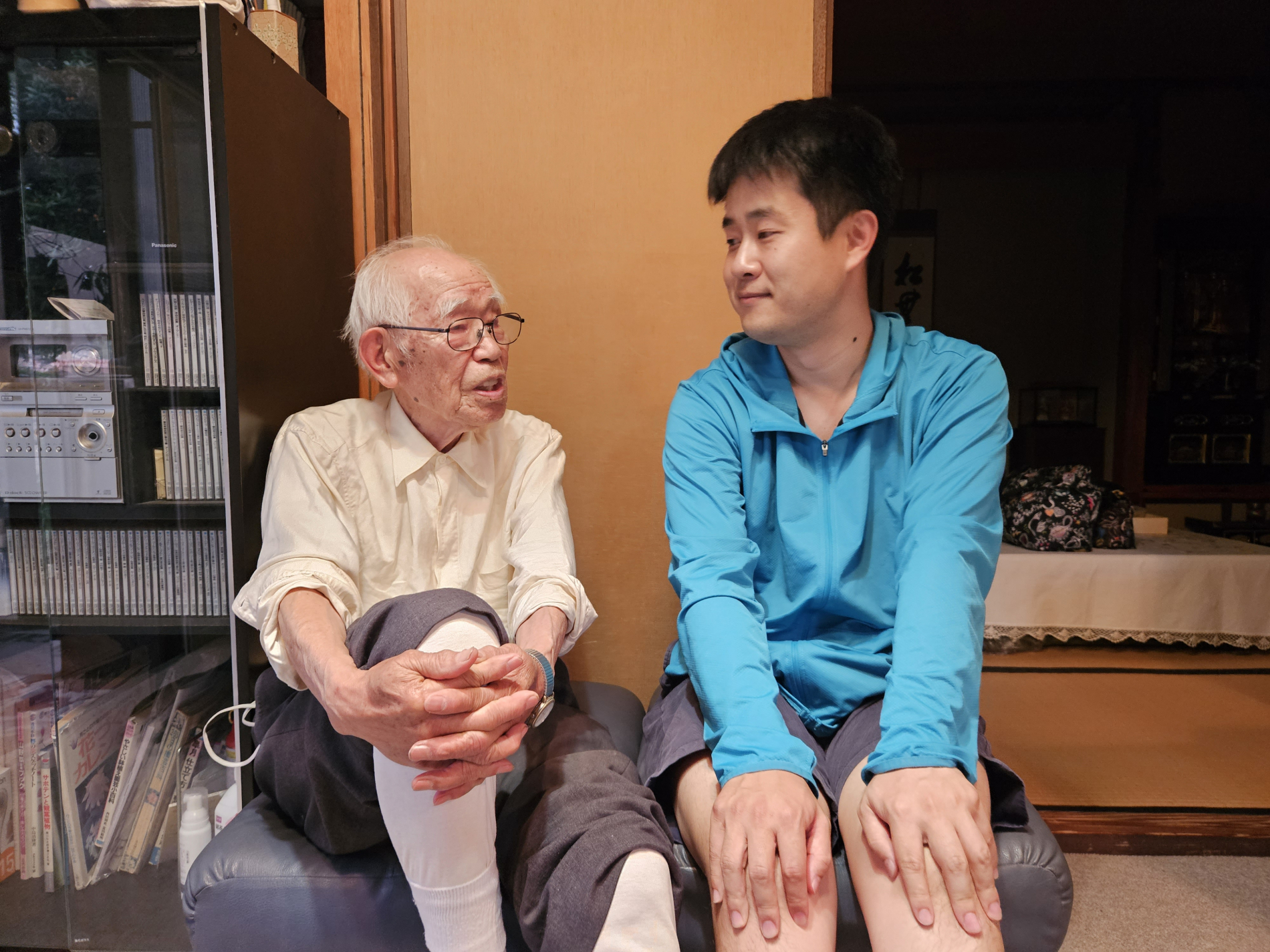 Mr. Ogata, listening to his grandfather Shozo’s stories about the dropping of the bomb
Mr. Ogata, listening to his grandfather Shozo’s stories about the dropping of the bomb
Participants in the program attend presentations about things like the experiences of the bombing and the effects of radiation on the body; training on how to interview survivors; and courses in presenting led by public speaking professionals. Afterward, with the support of a supervisor from the city government, they draft manuscripts for their own presentations. Participants take a test in which they give a real presentation based on that manuscript and, if they pass, they are granted appointment as a family successor.
One opportunity for family successors to carry out their mission is the regularly scheduled presentation (no reservation required, free of charge) that is held every day in the first basement level of the East Building of the Hiroshima Peace Memorial Museum. Mr. Ogata led his first presentation in June of 2023.
“A woman who had survived the bomb was in the audience, and she was crying when she said to me, ‘I’m glad that young people are talking like this. Please keep spreading your word.’ It gave me confidence that I was doing something meaningful.”
About 260 A-bomb legacy successors and family member successors make up a rotation for giving the regularly scheduled presentations, with each person taking a turn about once every two months. Mr. Ogata says he has about ten presentations under his belt. There are also chances to give presentations off-site, give talks to elementary school students who visit Hiroshima on school trips, and visit junior high schools in the Kanto region to prepare students for their school trips.
“The other day, I visited Higashiyamato City in the Tokyo metropolitan area. Many of these students were hearing stories about A-bomb survivors for the first time, and they listened very soberly. When I showed their written reflections to my grandfather, it only reinforced his understanding of the significance of doing this, and it also gave me a sense of satisfaction. When I went to Sagamihara in Kanagawa Prefecture earlier this year, thanks to the referral of a teacher who had seen my presentation, I was invited to another school for next year. That has also given me confidence.”
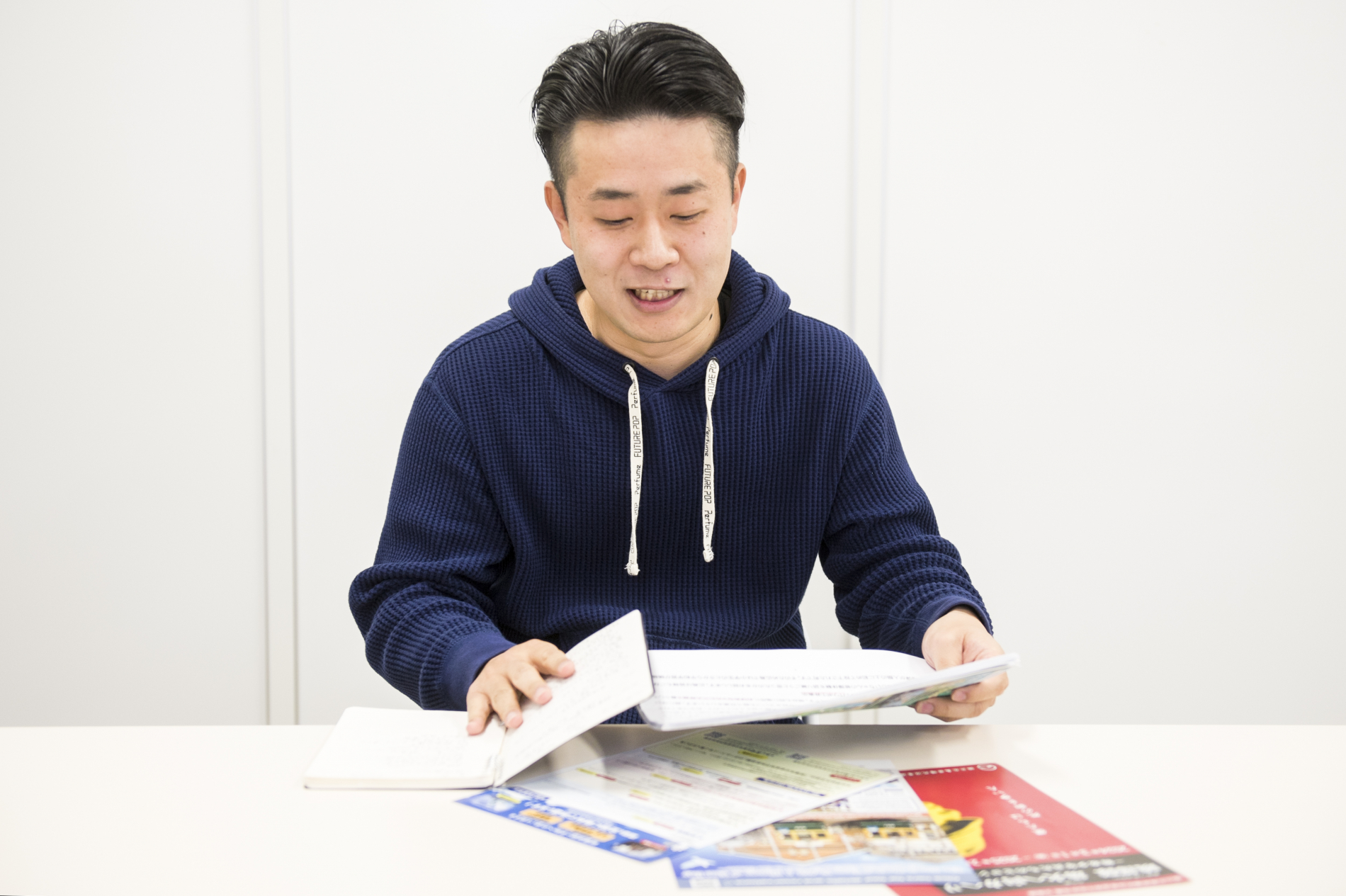 For visiting talks, he researches the locality and incorporates information into his presentation
For visiting talks, he researches the locality and incorporates information into his presentation
For visiting presentations, Mr. Ogata makes a point of adding locally relevant topics to his talk. In Higashiyamato, he spoke about the Former Hitachi Aircraft Tachikawa Factory Transformer Substation, a war memorial site in that city. The building’s outer walls are pockmarked with countless pits caused by machine gun fire and bomb shrapnel.
“It underwent air raids that were so intense that over a hundred people were killed, and some say that if the west has its A-Bomb Dome, the east has the Transformer Substation. A Chinese parasol tree that survived the atomic bombing grows next to the Substation, having been donated by Hiroshima. By referring to this local monument, I was able to provide the students with more context. In my presentations, I try to speak in a way that makes these topics seem less remote or detached to my listeners.”
Mr. Ogata says that he would like to continue participating in the program for a long time to come. As A-bomb survivors continue to age and opportunities to speak directly with them dwindle, there are significant questions as to how to carry forward their stories.
“My grandfather is ninety-six. I want to get a thorough understanding of his experiences. If I don’t undertake this legacy, his monumental experience will be lost. It’s my role to make sure it continues by giving my presentations to as many people as I can.”
[Contact information related to the A-Bomb Legacy Successors Training Program]
Hiroshima Citizens Affairs Bureau, Peace Promotion Division, Peace Promotion Section, Supervisor of A-Bomb Legacy Successors
6-34 Kokutaiji-machi, Naka-ku, Hiroshima
Phone: 082-504-2900 Fax: 082-504-2986
peace@city.hiroshima.lg.jp

